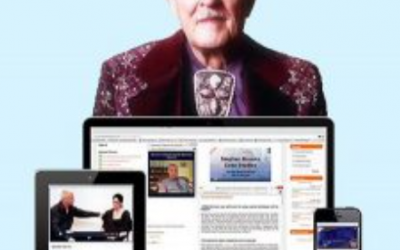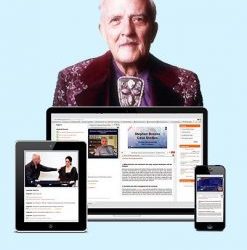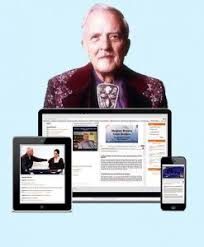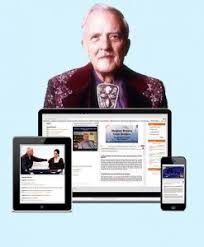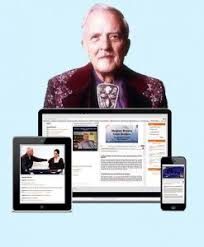🌟 New Year Offer 🌟
Celebrate 2026 with 30% OFF on all products! Use code: NEWYEAR2026. Hurry, offer ends soon!
Organic metaphors, and Symptom Based metaphors
Advanced Strategies to Deal with Failure
Pursuing Relevance The Structure for Learned Experience
Stephen Brooks – Hypnotherapy Lectures – Part 7
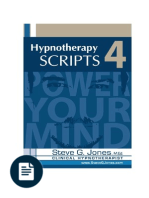
The course is based on (*7*)120 essential skills and techniques The following areas are covered:
Principles of Indirect Hypnosis
– The Interactional Approach
– The Intrapersonal Approach
– Implications, compression and economic languages
– Symptom Substitution, and Resolution
– The Relationship Between Cause And Symptom
– Response Attentiveness
– Achieving positive outcomes
– Communicating with The Unconscious
– Identifying Verifiable Objectives
– Values, Criteria, and Beliefs
– Trauma and Abreaction
– How to Identify Sabotage Strategies
– Therapeutic orientation – Change or improvement?
– Motivation to keep the patient in therapy
Future Pacing
– Indirect Benefits and Secondary Gains
– Weaning Patients off Therapy
– Understanding the Patient’s metaphors
– Contextualising Change
– Organic metaphors and Symptom Based metaphors
– Developing advanced strategies to deal with failure
– Pursuing Relevance
– The Structure for Learned Experience
– The Framing Model and Irrationality
– Time and context frames
Benefits and costs
– The Laws of Attachment, and Nonattachment-Attachment
– Types of Decision Making Personality
– Anchoring & Conditioning
Feedback Loops
– The Laws of Concentrated Effort, Reversed, and Concentrated Effort
– The Laws of Positive Emotion and Reinforcement
– The Laws of Utilization, Observation, and Reframing
Indirect Hypnosis Techniques
Hypnotic Time Distortion
– Leisure Trance Inductions and Favorite Activity
– Pseudo-Hypnosis Orientation in the Time
– Positive Negative Incorporation in Hypnosis
– The Third Person Separation
– Hypnotic catalepsy
– Arm Levitation Inductions
– Automated Writing in Hypnosis
– Unconscious Negotiation in Hypnosis
– Induction: Recalling Previous Trance
– Surprise Technique Inductions
– The therapeutic metaphor
– Multiple Mirror Therapeutic Induction
– Age Regression Techniques
– Paradoxical Intervention
Download immediately Stephen Brooks – Hypnotherapy Lectures – Part 7
– The Old Master Induction
– Indirect Use of Sub-Modalities
– Uptime downtime induction
– Utilising The Patient’s Needs As A Motivational Strategy
Stop Smoking Strategy
– Inducing Amnesia
– The Self-Suggestion Induction
– Teaching your patient self-Hypnosis
– The Four Seasons induction
– Crystal Gazing and Multiple Screens
– Non Verbal Inductions
– Ideo-Motor Signaling
– The My Friend John Induction
– Cellular Healing Therapy
– Induction of the Early Learning Set
– Scrambling Symptoms
– Ambiguous Task Assignments
– Eye Fixation and Distraction inductions
– The Confusion induction
Deep Trance Identification
– Hypnosis for Pain Control and Anaesthesia
Skills in Indirect Hypnosis
– Taking the Patient’s History
High Quality Information Gathering
– The Creation and Application of Therapeutic Nominalizations
Recognizing the Minimal Cues of Trance
– Creating Dependent Suggestions
– Open Questioning
– Negative and Reverse frames
– Sorting patterns of association
– Adjunctive Suggestions
– Calibrating to Positive & Negative Response Cues
– Responding To Polarity Responses
– Classes for Double Binds
– Passive Response Suggestions
– Using Therapeutic & Hypnotic Double Entendre
– Post Hypnotic Suggestions
– Serial Suggestions
– Challenging Negative Minalisations
– Sensory Based Predicates
– Open-Ended Suggestions
– Resource Accessing
– Facial Symmetry Calibration
– Insertive eye contact
– Recognising Patients’ Subjective Interpretations
– Casting Doubt and Challenging a Patient’s Interpretations
– Getting Video Descriptions & Sequence Responses
Designing Therapeutic Tasks
– Tasks to be delivered and prescribed
– Building a compassionate, empowered personality
Integrity and ethics
– The importance patient confidentiality
Integrity and ethics in a hypnotherapy practice
– When it might be more beneficial to partner with a colleague-Therapist
– How to keep patient records safe
– When should you stop receiving treatment?
– Ethics and legal business management and practice
– Current status of hypnosis, codes of practice
– Hypnosis contraindications for medical and psychological reasons
– The importance to request feedback and follow up-Up
– Recognizing psychiatric illness and when to refer
– Establishing clear guidelines about cost and duration
Practitioner Development
– CBT, psychodynamic and humanistic psychology
– Hypnosis research methodology
– The history and therapeutic use of hypnosis
Objective evaluation of professional skill development
– The value and necessity of supervision and ongoing training
– Basic anatomy and physiology
Recent developments in brain science and mind research
Recognize the effects of previous treatment
The Hypnotic Relationship
– To show compassion and understanding to those in crisis
– Lifestyle management and general health of patients.
– Patients should have the appropriate social and relationship skills.
– Support groups and resources available in the local area for patients.
– Identifying the patient’s expectations regarding outcomes
– Counter transference and transference
– Involving patients in the treatment.
– Secondary or External Influences that Affect Therapy
– Contextualizing treatment to the patient’s environment
How to communicate clearly your therapeutic options
Emotions can influence patients’ decisions and perceptions
– How to reach mutually acceptable therapeutic outcomes
– Evaluation of the effectiveness of treatment
These 10 Lectures This section contains:
61. The Stephen Brooks Self Suggestion Induction
62. Teach your patient self-hypnosis
63. Stephen Brooks’ Four Seasons Induction
64. Understanding the Patient’s metaphors
65. Contextualising Change
66. Organic metaphors, and Symptom Based metaphors
67. Crystal Gazing and Multiple Screens
68. Non Verbal Inductions – Erickson’s Handshake Induction
69. Ideo Motor Signaling
70. Cross Matching
Course Features
- Lecture 0
- Quiz 0
- Duration Lifetime access
- Skill level All levels
- Students 36
- Assessments Yes

